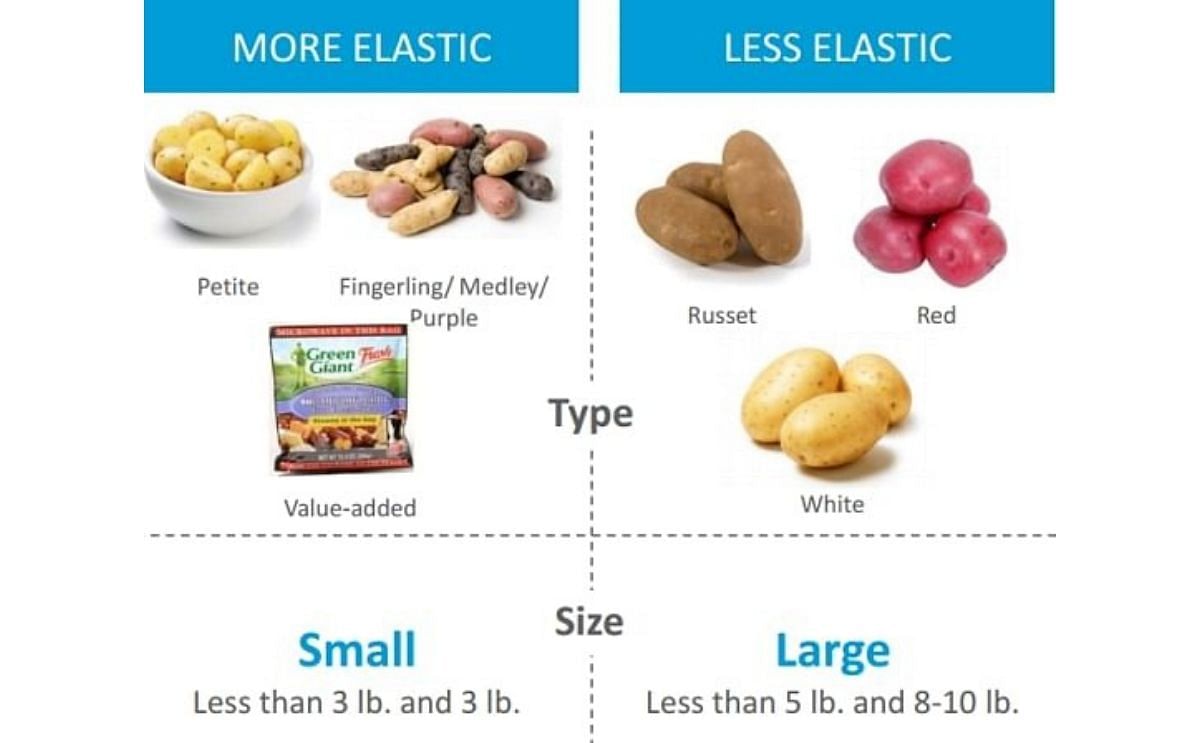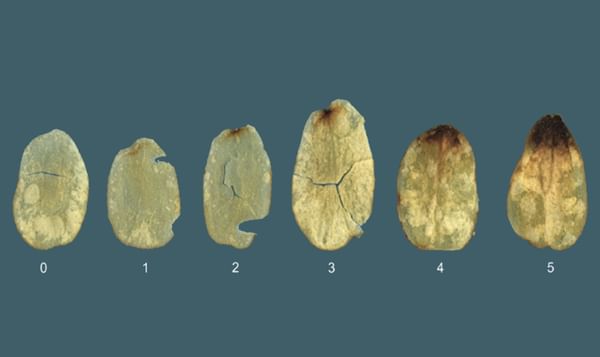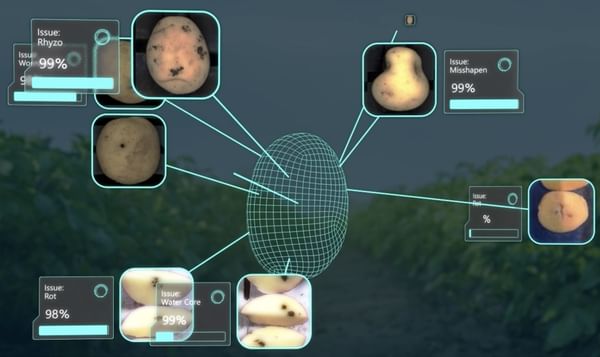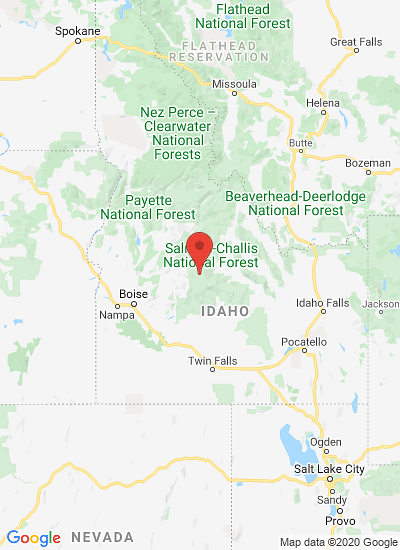Price Elasticity varies based on potato variety and packaging size: everyday potatoes and large pack sizes are less elastic (Nielsen Perishables Group Price Elasticity Study 2014
Consumer price sensitivities in the potato category

New research from the United States Potato Board (USPB) reveals the complexity and range of price sensitivities within the potato category.
The relationship between price and consumer demand is a fundamental understanding, but not easily determined. As a potato industry partner, the USPB recognizes the value in understanding consumer reactions to changes in potato pricing. In order to understand this complex question, the Board commissioned the Nielsen Perishables Group to conduct a comprehensive price elasticity study on the potato category. The study comprises more than five years of U.S. retail sales data, and includes more than 800,000 sales records. An essential part of the analysis design was to break the potato category into 24 product groups, by both potato type (Russet, red, yellow, etc.), and package size (5 lb., 8-10 lb., etc.).
The research revealed a wide range of price sensitivity within the potato category, concluding that there is no “one size fits all” approach to pricing across fresh potato products. For example, larger bags of Russets are the least price sensitive and inelastic, meaning demand for these products generally remains steady despite price fluctuations. The rest of the category is more price sensitive, indicating demand levels rise or fall in accordance with price fluctuations, typically depending on potato type and package size.
The study also revealed regional variance in price sensitivity. The New England area is more price sensitive than the Pacific or Mountain regions. For example, a 10% increase in price of smaller than 3 lb. packages of Fingerling/Medley/Purple potatoes in the non-holiday, price strong, period would drive a 43% decrease in volume in the New England sub-region, while only 26% decrease in volume in the Mountain sub-region.
Research findings are available at the USPB Resource Center.
The USPB encourages the U.S. potato industry to utilize the study when reviewing pricing strategy with their retail customers in order to move away from commodity-driven strategies to consumer-centric ones.
The relationship between price and consumer demand is a fundamental understanding, but not easily determined. As a potato industry partner, the USPB recognizes the value in understanding consumer reactions to changes in potato pricing. In order to understand this complex question, the Board commissioned the Nielsen Perishables Group to conduct a comprehensive price elasticity study on the potato category. The study comprises more than five years of U.S. retail sales data, and includes more than 800,000 sales records. An essential part of the analysis design was to break the potato category into 24 product groups, by both potato type (Russet, red, yellow, etc.), and package size (5 lb., 8-10 lb., etc.).
The research revealed a wide range of price sensitivity within the potato category, concluding that there is no “one size fits all” approach to pricing across fresh potato products. For example, larger bags of Russets are the least price sensitive and inelastic, meaning demand for these products generally remains steady despite price fluctuations. The rest of the category is more price sensitive, indicating demand levels rise or fall in accordance with price fluctuations, typically depending on potato type and package size.
The study also revealed regional variance in price sensitivity. The New England area is more price sensitive than the Pacific or Mountain regions. For example, a 10% increase in price of smaller than 3 lb. packages of Fingerling/Medley/Purple potatoes in the non-holiday, price strong, period would drive a 43% decrease in volume in the New England sub-region, while only 26% decrease in volume in the Mountain sub-region.
Research findings are available at the USPB Resource Center.
The USPB encourages the U.S. potato industry to utilize the study when reviewing pricing strategy with their retail customers in order to move away from commodity-driven strategies to consumer-centric ones.
Like to receive news like this by email? Join and Subscribe!
Join Our Telegram Channel for regular updates!
Highlighted Company
Sponsored Content
Sponsored Content
Sponsored Content
Sponsored Content
Sponsored Content










